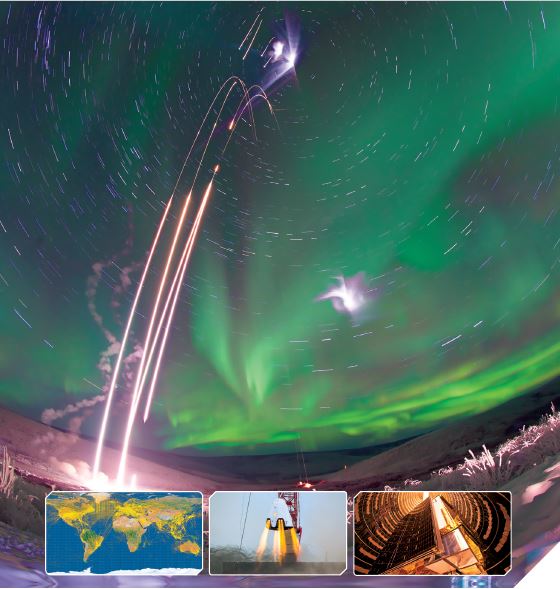Launch
Human Space Launch
2016 – U.S. Suborbital – Snapshot
The promise of humans routinely traversing space for the purposes of business and pleasure has been around for nearly as long as…
2016 – U.S. Human Launch – Snapshot
The United States is approaching its sixth year without a space launch vehicle capable of transporting humans to space and back. NASA has instead…
2016 – Russia Human Launch – Snapshot
Russia continued to be the only nation ferrying humans to the International Space Station (ISS) in 2016 with its…
2016 – China Human Launch – Snapshot
China was one of two nations with human space launch vehicles active in 2016. After a three-year hiatus, China launched its…
2016 – Infrastructure: Space Infrastructure


Space infrastructure is a fundamental prerequisite for all activities that make use of space. It comprises all the hardware, software, and operators responsible for creating and supporting the construction, launch, and deployment of spacecraft.
2015 – China Launch, Human
China’s most recent human mission to space was in June 2013, when three taikonauts docked a capsule with the Tiangong-1 space station. Since then, China has announced plans to launch a second space station, Tiangong-2, to replace Tiangong-1. The Chinese government continued assembling and testing Tiangong-2 in 2015, intending to launch it into orbit sometime in 2016. A subsequent crewed mission, Shenzhou-11, would be launched later in 2016. The crew will dock with the Tiangong-2 and may stay in the space station as long as a month.
2015 – Russia Launch, Human
In 2015, Russia continued to be the only nation flying humans into space since June 2013. The Russian Soyuz capsule was conceived, designed, and first launched nearly five decades prior to 2015. The Soyuz space launch vehicle that boosted the Soyuz capsule into space has an even longer heritage. The first of its family launched as the world’s first intercontinental ballistic missile, and a succeeding generation launched Sputnik, the world’s first satellite. Capsule and launch vehicle continued to be modified over the years, enabling them to remain in service.
2015 – U.S. Launch, Human
Nearly five years have passed since the United States stepped back from launching humans with its own space vehicles, the last of which flew in July 2011. The country conducts human operations in space on the ISS, contracting the launch of U.S. astronauts through the Russian Federal Space Agency, Roscosmos. In August 2015, NASA reserved six seats for 2018 from the Russians for $490 million. NASA’s leadership reported that the contract was necessary due to underfunding of the Commercial Crew Program (CCP), which reduced NASA’s ability to support private companies developing human space launch capabilities.
2015 – U.S. Suborbital – Snapshot
NASA’s efforts with its Commercial Crew Program and Space Launch System primarily focus on launching humans into Earth orbit and beyond. However, other organizations and companies are pursuing the goal of reusable suborbital launch vehicles for humans.
2015 – Orbital Human Space Launch – Snapshot
In 2015, Russia was the only nation conducting flights of humans to space and back. While countries such as the United States and China continued with plans for their own human spaceflight programs…